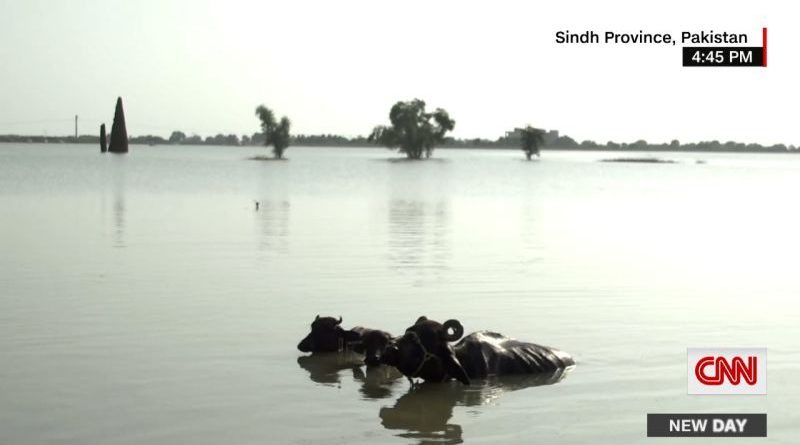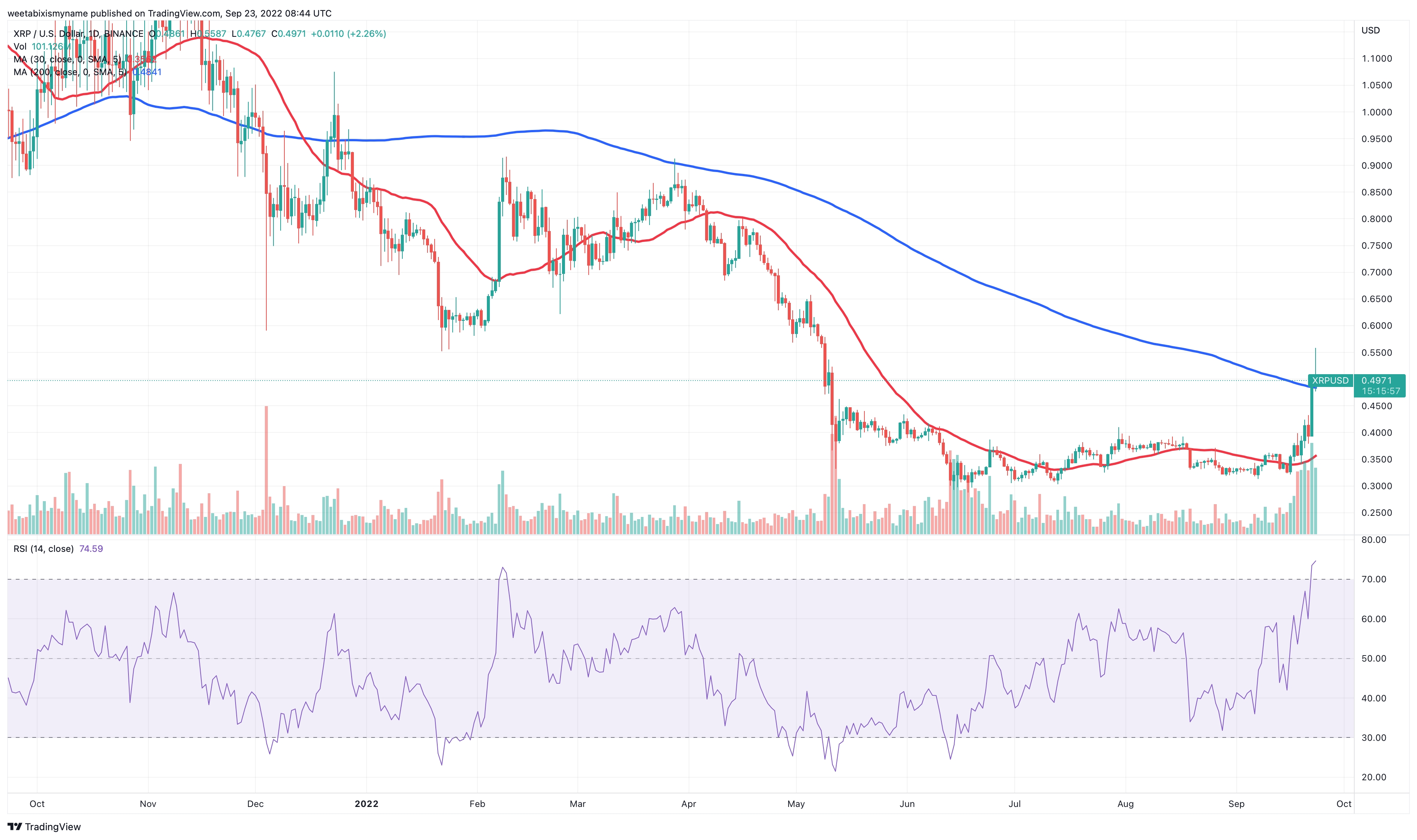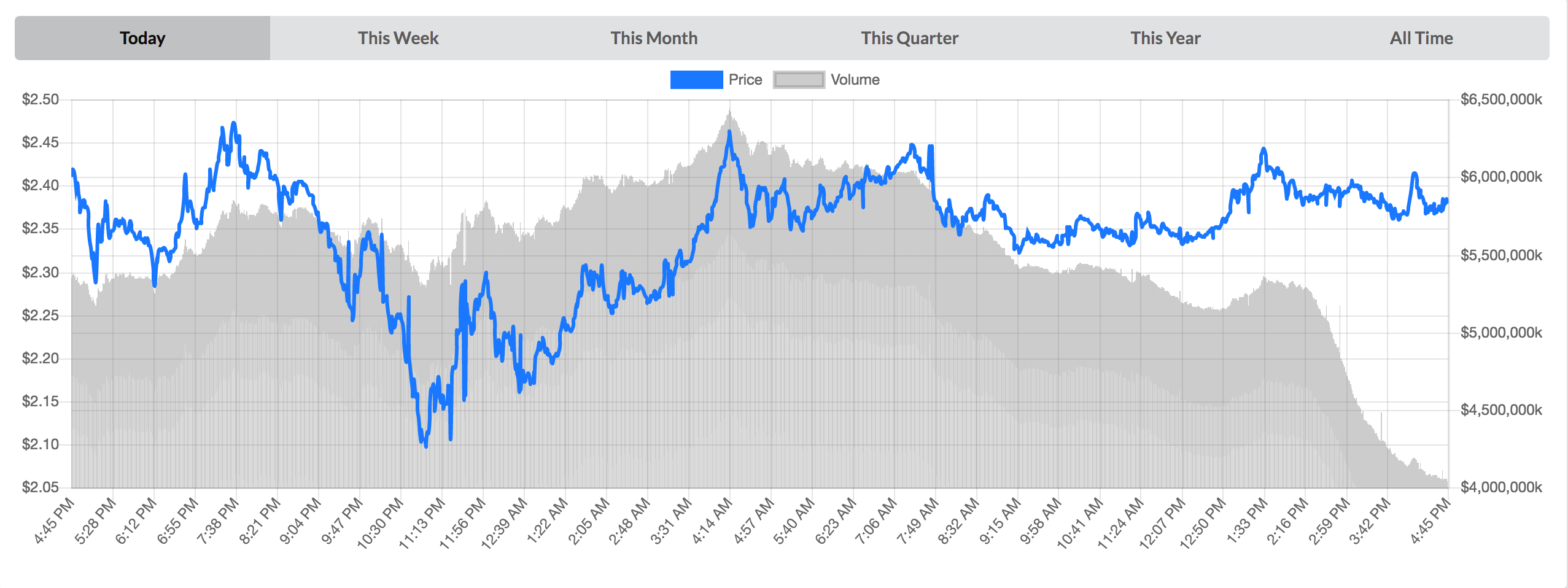Flooding: A Grave Threat To Livestock And Farms

Table of Contents
The Immediate Impacts of Flooding on Livestock
The immediate aftermath of a flood is often catastrophic for livestock. The sheer force of floodwaters, combined with the debris and contaminants they carry, creates a dangerous and deadly environment for animals.
Drowning and Injury
Flooding's most immediate danger to livestock is drowning. Rapidly rising waters can overwhelm animals, particularly those confined to barns or pastures with limited escape routes.
- Increased risk for vulnerable animals: Young, old, or sick animals are especially vulnerable to drowning and hypothermia during floods. Their reduced mobility and weakened immune systems make them less capable of escaping or surviving the harsh conditions.
- Physical trauma: Strong currents and debris carried by floodwaters can inflict serious physical injuries on livestock, leading to broken bones, lacerations, and internal bleeding. These injuries can be fatal or require extensive veterinary care.
- Hypothermia: Prolonged exposure to cold floodwaters leads to hypothermia, a dangerous drop in body temperature that can be fatal if not treated promptly. Animals may become lethargic, weak, and unable to regulate their body temperature effectively.
Disease and Infection
Floodwaters are often contaminated with pathogens and harmful substances, leading to various diseases in surviving livestock.
- Waterborne diseases: Exposure to bacteria, viruses, and parasites present in contaminated water dramatically increases the risk of various waterborne diseases, including leptospirosis, foot rot, and E. coli infections.
- Compromised immune systems: Stress from the flood event itself weakens the animals' immune systems, making them more susceptible to disease. The lack of access to clean food and water further exacerbates this vulnerability.
- Contaminated feed: Floodwaters can contaminate feed supplies, making them unsafe for consumption and potentially causing further health issues in livestock. Farmers need to carefully assess and dispose of contaminated feed after a flood.
Loss of Feed and Forage
Flooding destroys crops and pastureland, leaving livestock without essential sustenance, creating a significant challenge for farmers.
- Submerged feed stores: Floodwaters often render feed stores unusable, leading to a shortage of vital animal feed. This can drastically impact animal health and productivity.
- Contaminated forage: Forage submerged in floodwaters becomes contaminated and unsafe for consumption, requiring farmers to find alternative sources of feed.
- Supply chain disruptions: Flooding often disrupts transportation networks, making it difficult to access replacement feed and other essential supplies, adding to the immediate post-flood challenges.
The Long-Term Effects of Flooding on Farms
The impact of flooding on farms extends far beyond the immediate aftermath, creating significant challenges for long-term recovery and sustainability.
Economic Losses
Flooding causes substantial financial losses for farmers, significantly impacting their income and long-term viability.
- Infrastructure damage: Floods damage farm infrastructure, including buildings, fences, and equipment, incurring significant repair costs.
- Livestock loss and reduced productivity: The loss of livestock and the reduced productivity of surviving animals lead to substantial revenue loss for farmers.
- Increased insurance premiums: The increased risk of flooding often results in higher insurance premiums, adding to the financial burden on farmers.
Soil Degradation
Floodwaters alter soil composition, impacting future crop yields and the overall health of the farmland.
- Erosion and topsoil loss: The force of floodwaters erodes topsoil, reducing soil fertility and impacting crop growth.
- Salinization: Saltwater intrusion from coastal flooding can salinize the soil, making it unsuitable for many crops.
- Reduced soil fertility: The disruption of soil structure and nutrient balance reduces soil fertility, affecting crop yields for years to come.
Environmental Contamination
Flooding contaminates soil and water sources, posing long-term environmental risks.
- Chemical runoff: Floodwaters can carry chemical runoff from damaged farms, contaminating nearby waterways and ecosystems.
- Spread of pollutants and toxins: Flooding disperses pollutants and toxins, leading to water contamination and soil pollution.
- Groundwater contamination: Floodwaters can contaminate groundwater sources, impacting drinking water supplies and the long-term health of the environment.
Mitigation and Preparedness Strategies for Flooding
Effective mitigation and preparedness strategies are crucial for minimizing the devastating effects of flooding on farms and livestock.
Pre-Flood Planning
Implementing proactive measures before a flood event occurs significantly reduces flood-related damage.
- Emergency plan: Develop a comprehensive emergency plan, including strategies for livestock evacuation and securing essential supplies.
- Risk assessment: Identify high-risk areas on the farm and implement preventative measures like improved drainage systems and flood barriers.
- Insurance: Secure adequate livestock and property insurance coverage to protect against financial losses from flooding.
During a Flood
Swift and decisive action during a flood event can save lives and minimize losses.
- Livestock evacuation: Evacuate livestock to higher ground if possible, ensuring their safety and well-being.
- Securing property: Secure loose objects and protect buildings from flood damage to minimize property loss.
- Emergency services: Contact emergency services for assistance if needed, seeking help for both human and animal safety.
Post-Flood Recovery
Effective post-flood recovery is crucial for restoring farm operations and rebuilding resilience.
- Damage assessment: Assess the damage to infrastructure, livestock, and crops to determine the extent of losses.
- Government assistance: Seek government assistance and disaster relief funds to support recovery efforts.
- Soil remediation: Implement soil remediation and pastureland restoration to improve soil health and restore productivity.
Conclusion
Flooding poses a severe and multifaceted threat to livestock and farms. The immediate impacts include animal loss, injury, and disease, while long-term consequences involve economic hardship, soil degradation, and environmental contamination. Implementing proactive planning, employing effective mitigation strategies, and preparing for post-flood recovery are crucial to minimizing the devastating effects of flooding on farms and livestock. By understanding the risks and adopting appropriate preventative measures, farmers can protect their livelihoods and contribute to building more resilient agricultural systems against the increasing threat of severe flooding events. Learn more about protecting your farm from flooding and building flood resilience today.

Featured Posts
-
 Royal Air Maroc Renews Sponsorship Of Ouagadougou Pan African Film Festival Fespaco
May 07, 2025
Royal Air Maroc Renews Sponsorship Of Ouagadougou Pan African Film Festival Fespaco
May 07, 2025 -
 Stephen Currys Road To Recovery Latest Updates From Coach Steve Kerr
May 07, 2025
Stephen Currys Road To Recovery Latest Updates From Coach Steve Kerr
May 07, 2025 -
 Jenna Ortegas Appearance A Decade Older Than Before Public Opinion Divided
May 07, 2025
Jenna Ortegas Appearance A Decade Older Than Before Public Opinion Divided
May 07, 2025 -
 Is Macrons Vision For A European Netflix Becoming Reality
May 07, 2025
Is Macrons Vision For A European Netflix Becoming Reality
May 07, 2025 -
 Riana Skritiyat Muzikalen Vdkhnovitel Na Ed Shiyrn
May 07, 2025
Riana Skritiyat Muzikalen Vdkhnovitel Na Ed Shiyrn
May 07, 2025
Latest Posts
-
 Xrp Price Analysis Factors Influencing A Potential Rise To 3 40
May 08, 2025
Xrp Price Analysis Factors Influencing A Potential Rise To 3 40
May 08, 2025 -
 Understanding Xrp Ripple Before You Invest
May 08, 2025
Understanding Xrp Ripple Before You Invest
May 08, 2025 -
 Ripples Xrp Potential For Growth To 3 40 And Beyond
May 08, 2025
Ripples Xrp Potential For Growth To 3 40 And Beyond
May 08, 2025 -
 A Beginners Guide To Investing In Xrp Ripple
May 08, 2025
A Beginners Guide To Investing In Xrp Ripple
May 08, 2025 -
 Is Now The Right Time To Buy Xrp Ripple
May 08, 2025
Is Now The Right Time To Buy Xrp Ripple
May 08, 2025
